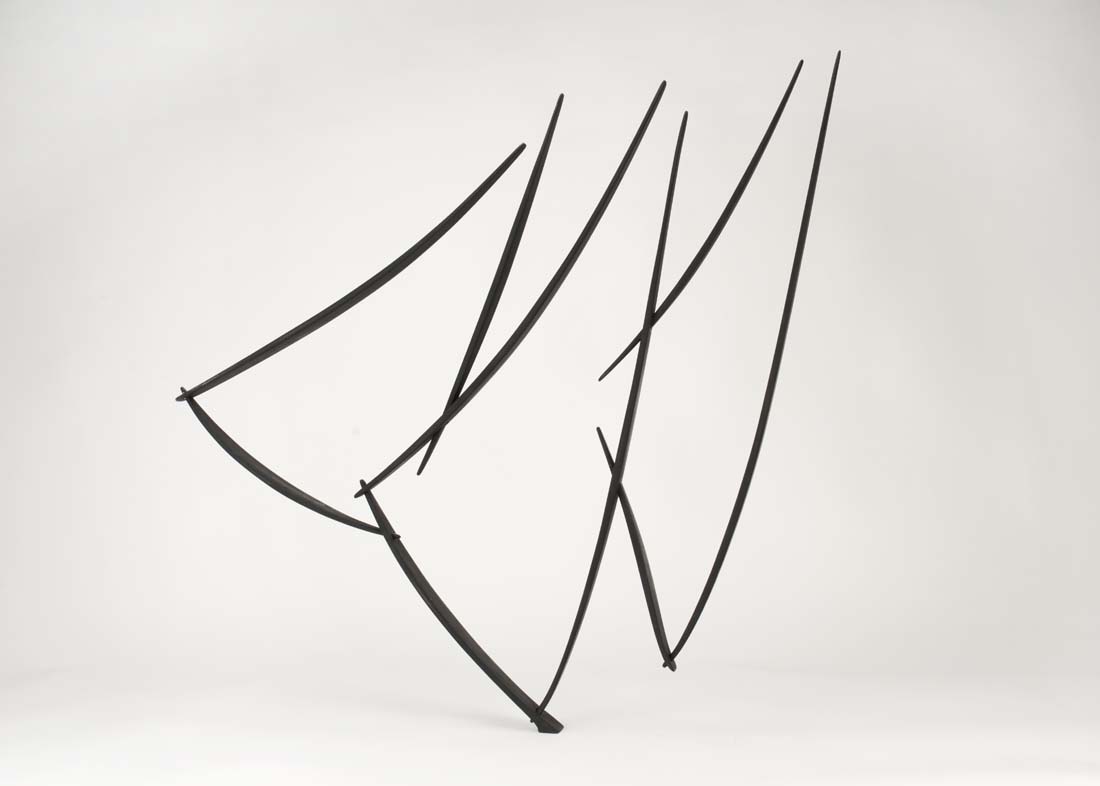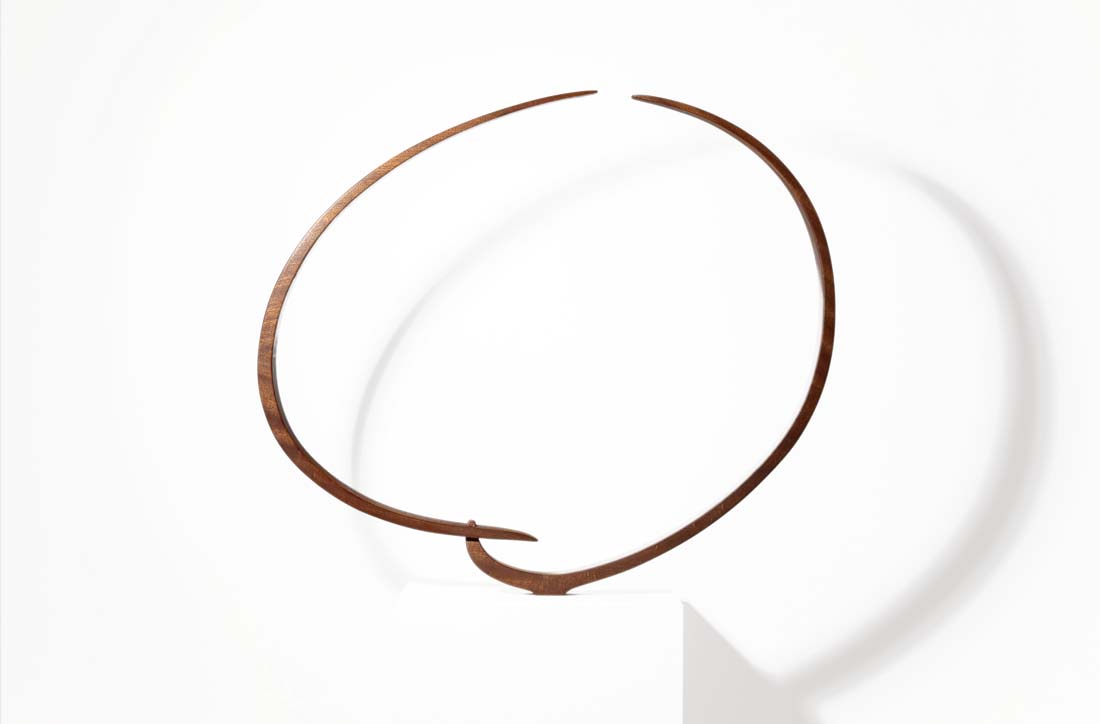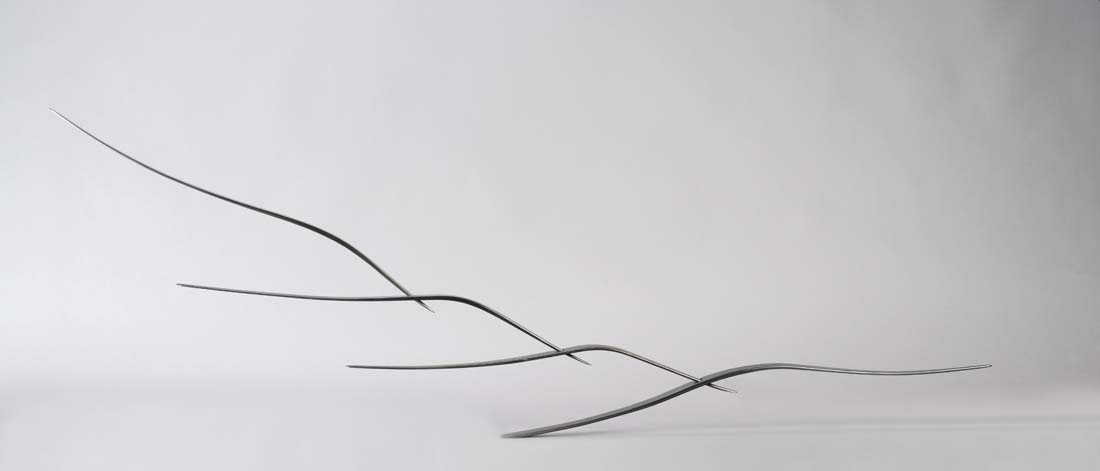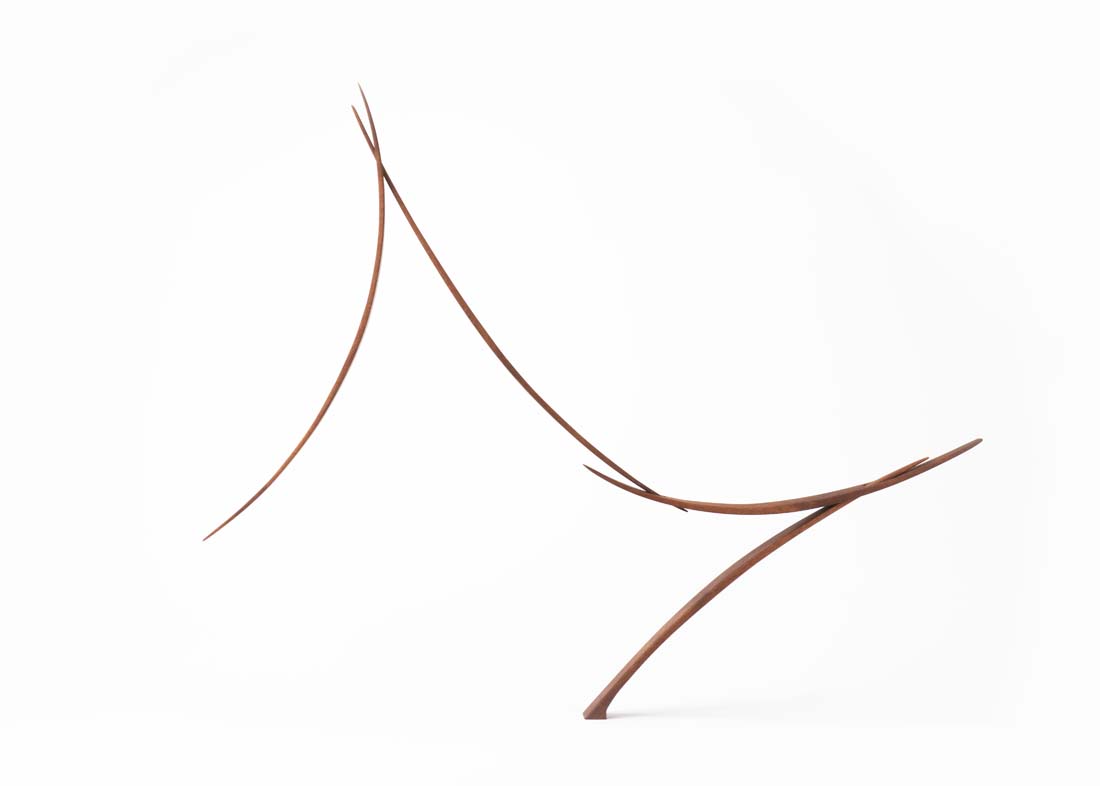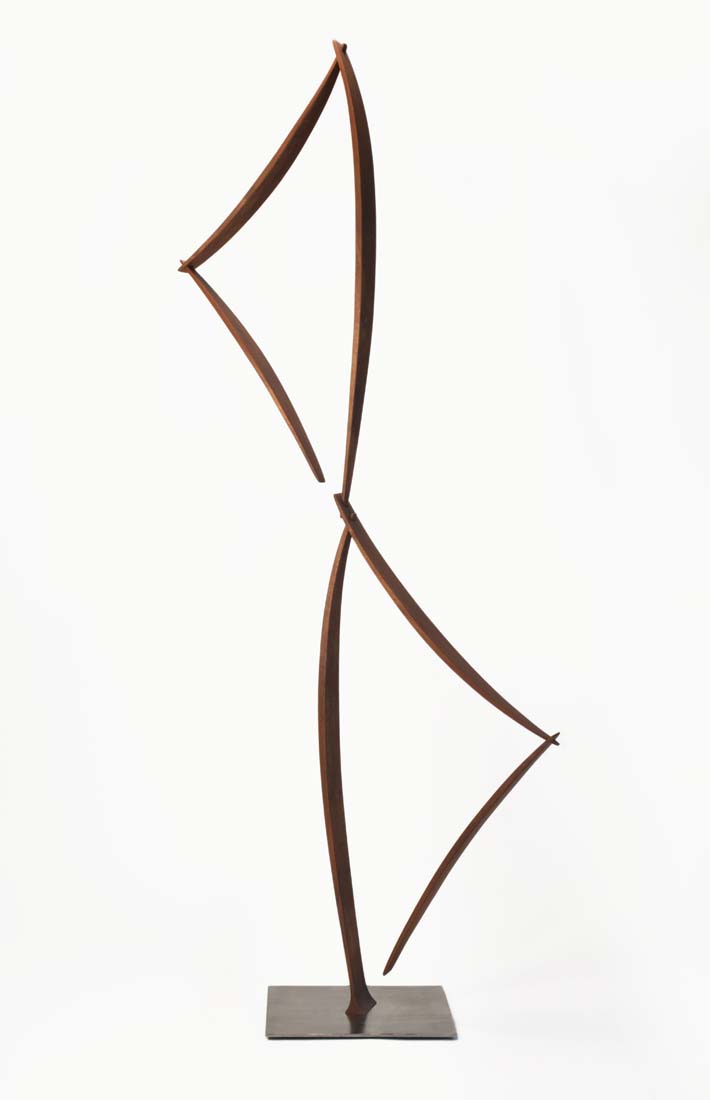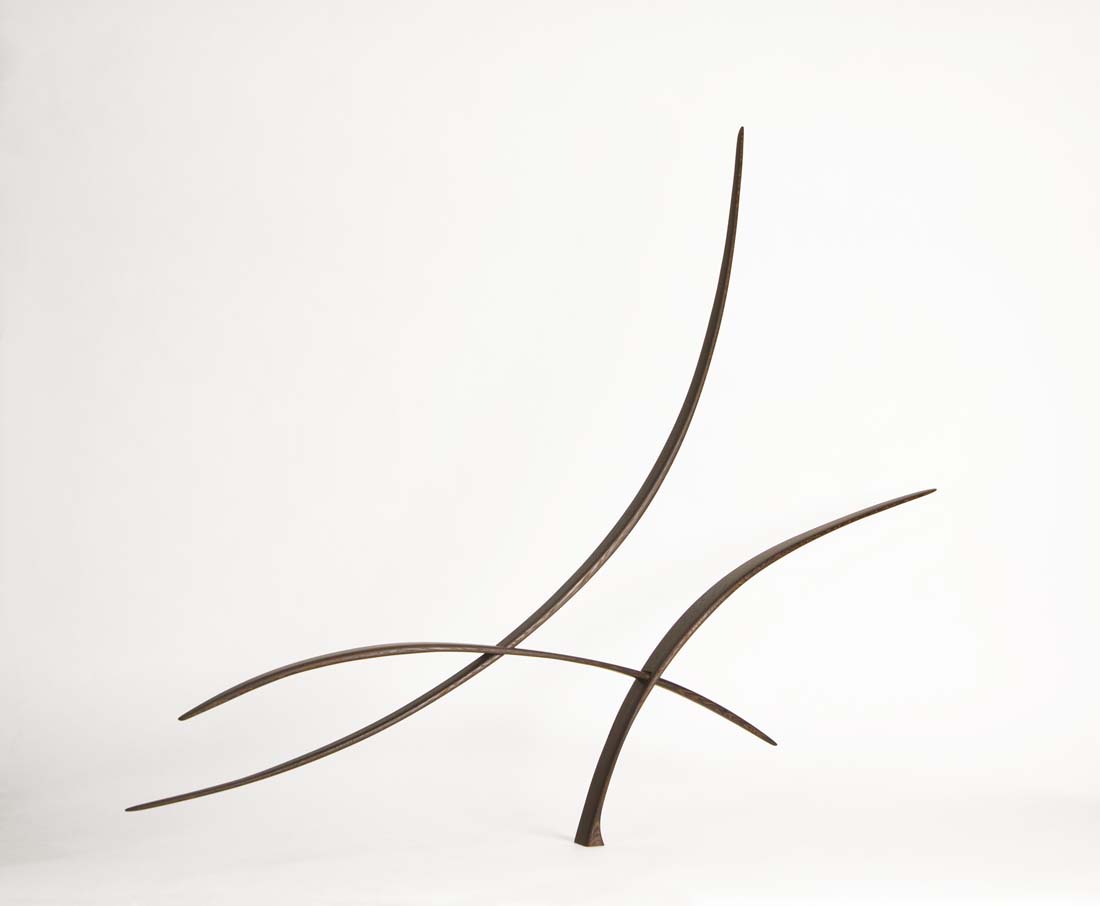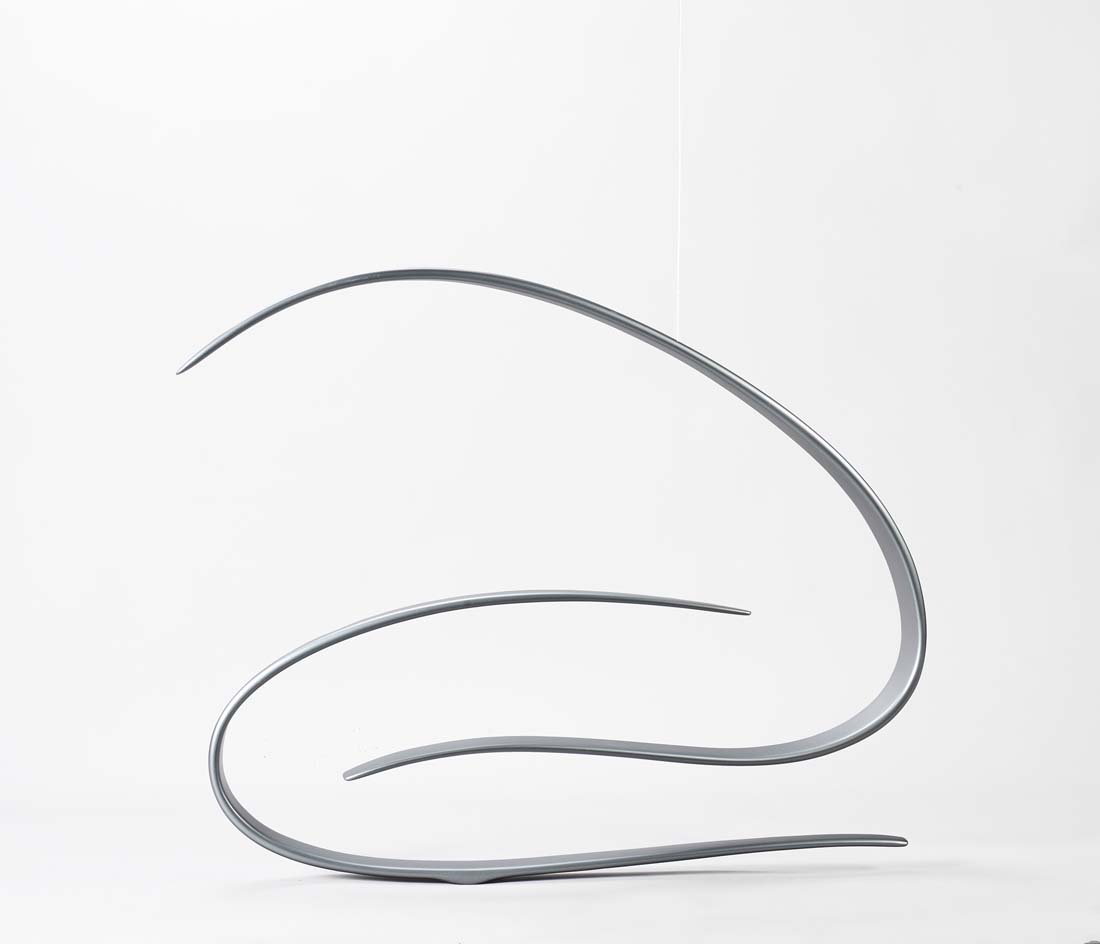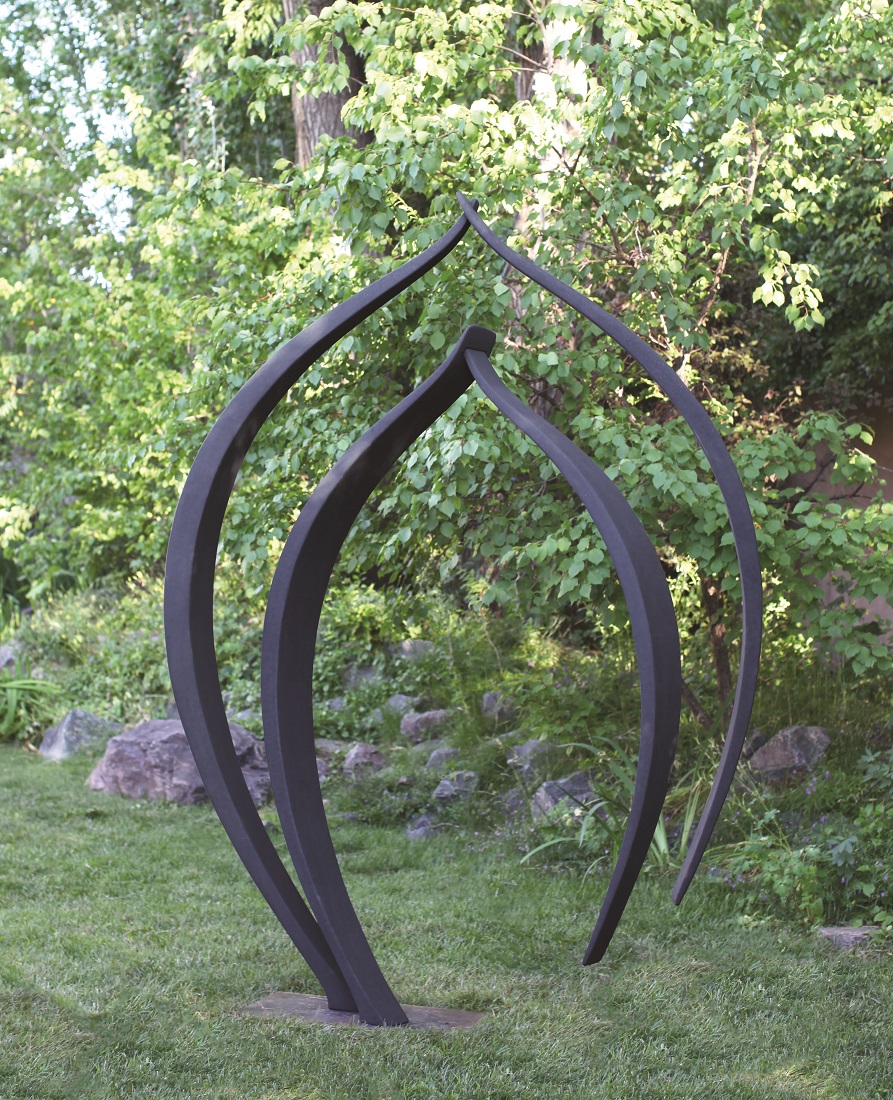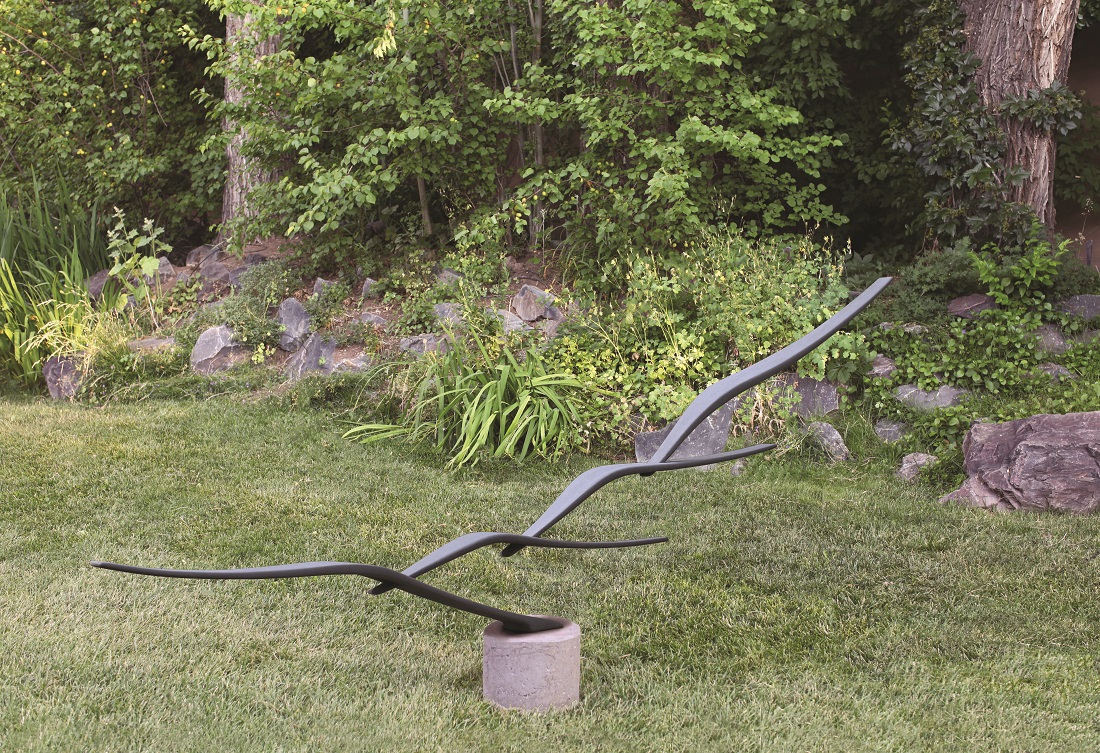For More Information
Alice Duncan
Director
Evan Feldman
Director
Will Clift has a sculptor’s eye for elegant form, the technical ability to make the complex simple, and the engineering skills to balance both traits within a precariously cantilevered, yet miraculously stable, work. Born and raised in Santa Fe, New Mexico, Clift has been creating sculptural forms since the age of four. His years of balancing building blocks in his childhood home; those spent designing functional furniture in high school; as well as those immersed within Stanford University’s intellectual melting-pot, where he acquired sophisticated machine-shop skills, entrepreneurial skills, and both a B.S. and an M.S. combining engineering, psychology, design, and management, have all informed this young artist’s aesthetic sense and sculptural agility.
In looking at any Clift sculpture, one immediately perceives the artist’s identification with, as well as his evolution from, two great 20th-century American artists. Alexander Calder and George Rickey were both similarly trained in physics and engineering and both have long been recognized as masters of sculptural innovation in their use of materials, their revolutionary conceptualizations of space and movement, and their lyrical aesthetic. Similar to these artistic predecessors, Clift is always searching for unconventional materials, using carbon fiber composites, as well as pigments and alloys developed for aerospace construction and automotive industries that enable him to fabricate his 21st-century designs. Unlike the kinetic sculptures of Calder and Rickey, the palpable sense of movement inherent in Clift’s works originates in their stability, rather than in their physical motion. His works appear as moving objects frozen in orbit or precariously poised, but firmly grounded. His sense of play, like Calder’s Circus, is felt in the assembly of the multiple pieces, as one watches Clift join each part together to create an unexpected and unbelievable whole. And the refinement, the geometry, and order – much like Rickey’s perfectly engineered opus – is apparent in the stability of each object and in the straightforward title of each, explaining the number of pieces or the underlying concept of the movement represented.
Will Clift’s work is an extension of this tradition of magical sculptural rhetoric. This is a result of the artist’s secure grounding in engineering, his playful imagination, and his strong aesthetic vision that is defined by minimalist grace. It is Clift’s minimalism that is so unexpected yet welcomed in a contemporary work. This is an age where the aesthetic choice is about “more,” with new technology and over-visualization in both narrative and viewpoint. Will’s sculptures are quiet and personal to the viewer; they are enigmatic rather than disturbing.





